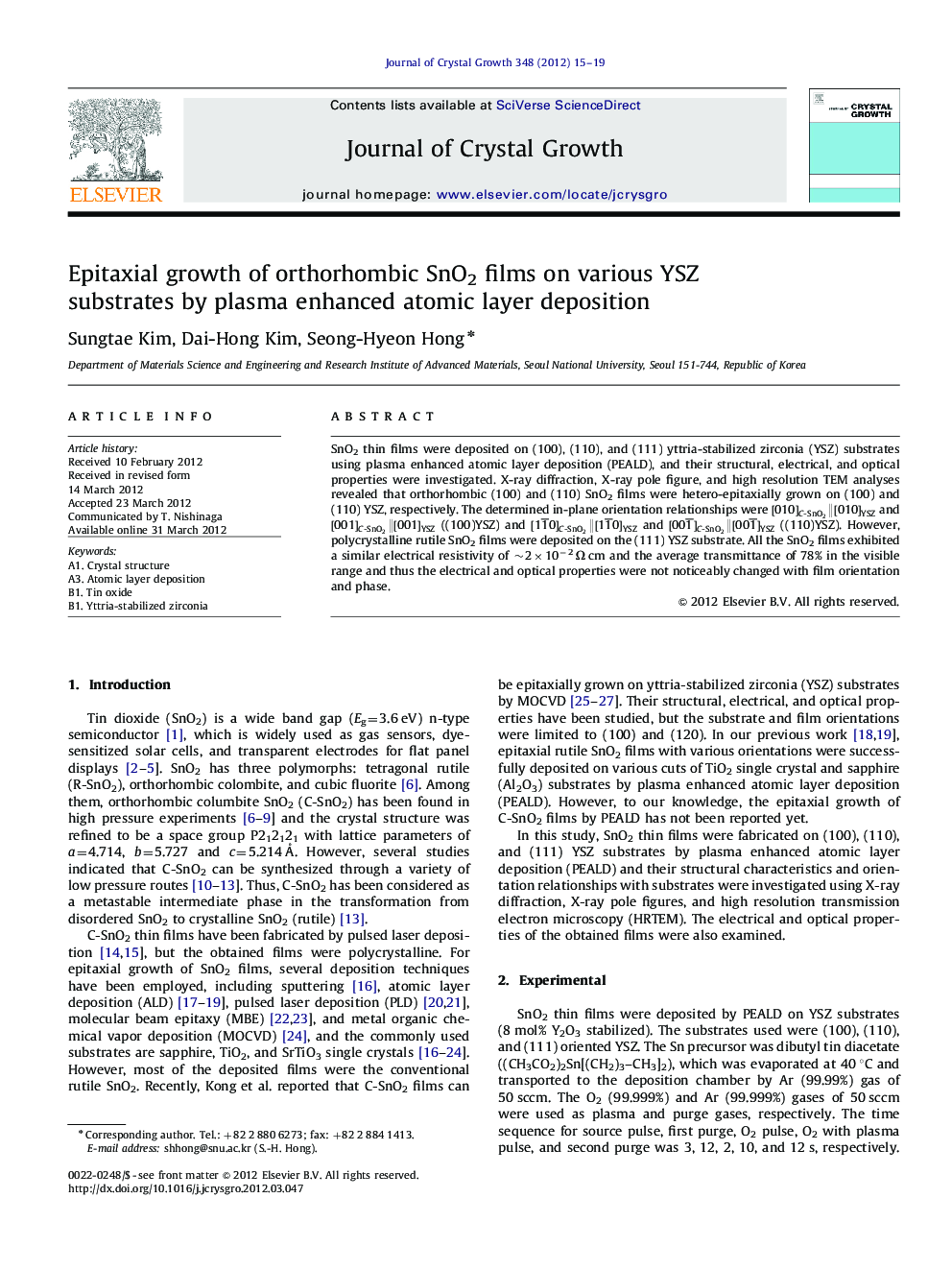| Article ID | Journal | Published Year | Pages | File Type |
|---|---|---|---|---|
| 1791816 | Journal of Crystal Growth | 2012 | 5 Pages |
SnO2 thin films were deposited on (100), (110), and (111) yttria-stabilized zirconia (YSZ) substrates using plasma enhanced atomic layer deposition (PEALD), and their structural, electrical, and optical properties were investigated. X-ray diffraction, X-ray pole figure, and high resolution TEM analyses revealed that orthorhombic (100) and (110) SnO2 films were hetero-epitaxially grown on (100) and (110) YSZ, respectively. The determined in-plane orientation relationships were [010]C-SnO2‖[010]YSZ[010]C-SnO2‖[010]YSZ and [001]C-SnO2‖[001]YSZ[001]C-SnO2‖[001]YSZ ((100)YSZ) and [11¯0]C-SnO2‖[11¯0]YSZ and [001¯]C-SnO2‖[001¯]YSZ ((110)YSZ). However, polycrystalline rutile SnO2 films were deposited on the (111) YSZ substrate. All the SnO2 films exhibited a similar electrical resistivity of ∼2×10−2 Ω cm and the average transmittance of 78% in the visible range and thus the electrical and optical properties were not noticeably changed with film orientation and phase.
► Epitaxial C-SnO2 films were prepared on (100) and (110) YSZ substrates by atomic layer deposition (ALD). ► In-plane orientation relationships were determined by X-ray diffraction and X-ray pole figures. ► Structural characteristics of epitaxial SnO2 films have been investigated by high resolution TEM. ► Electrical and optical properties of C-SnO2 films were examined.
